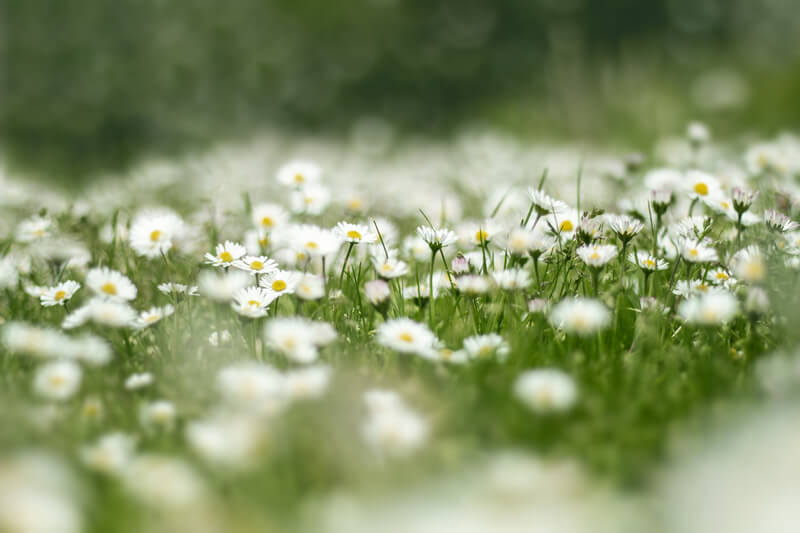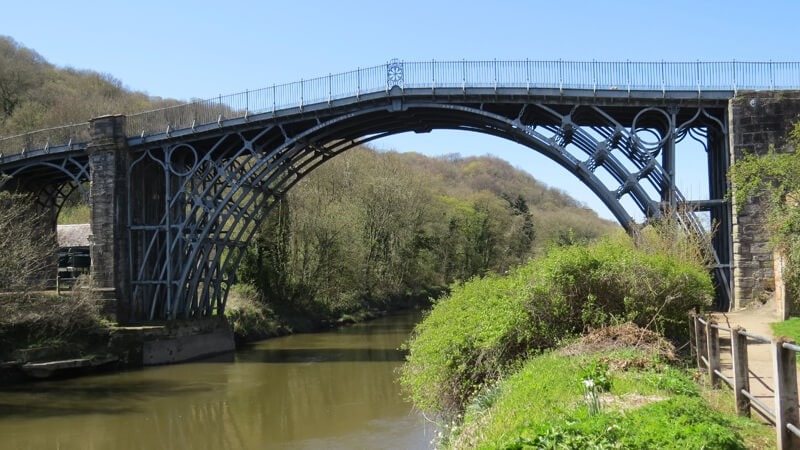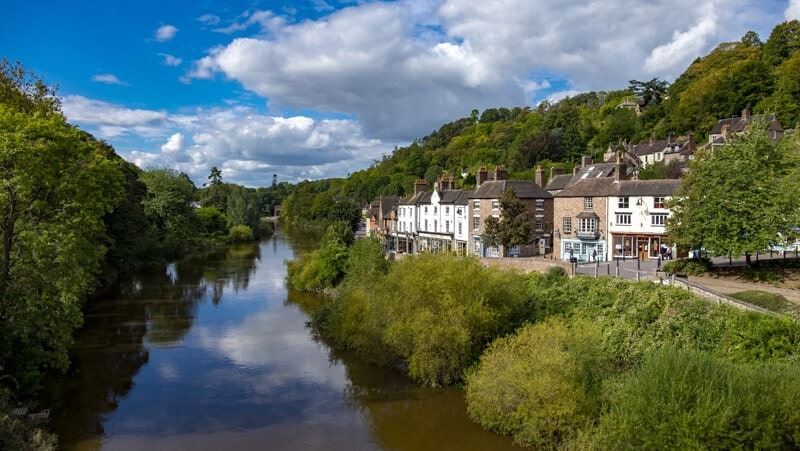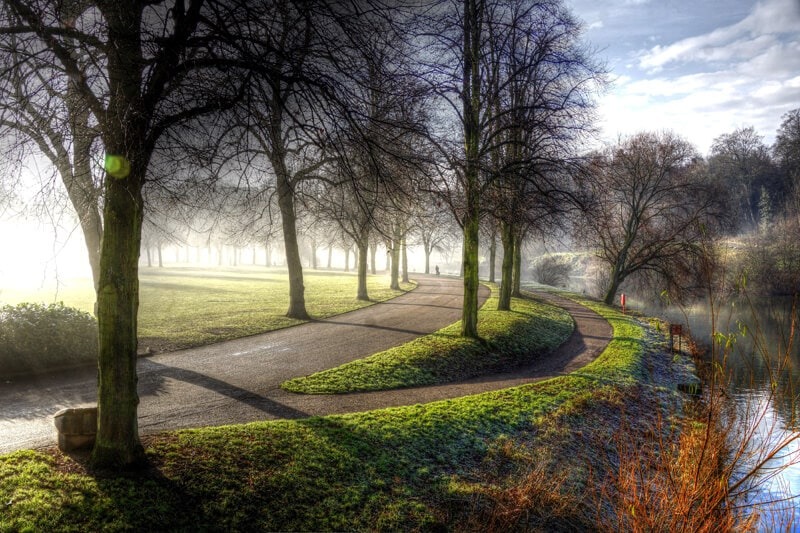I’m a Shropshire lass with childhood memories of meadows flooded with splashes of wild flowers rolling towards the horizon. I would blow dandelion seeds and watch them fly away into the distance and disappear. As a family we lived next to a farm and would awake to the regular sound of a cockerel and the march of the cows for milking. There was a cow named Daisy who fashioned a gleaming tanned skin and a blob of white on her nose, a guinea pig called Snowy, white naturally, and Henrietta, the prized hen, all dear friends of mine as a child growing up in Shropshire.
 I remember making daisy chains sitting in the middle of pastures with my sister on lazy Sunday afternoons. And there was an art to making a daisy chain back then and for us the conditions had to be right. A field, peaceful, tranquil and whispery, no bulls in sight or surprising mounds of unknown substances. The sun beaming from a cotton wool sky accompanied by a slight breeze in the air and a low pollen count a must. The grass rich in colour with a high population of cheerful daisies in residence, their white petals stretching upwards, eager to be seen, desperate to be picked.
I remember making daisy chains sitting in the middle of pastures with my sister on lazy Sunday afternoons. And there was an art to making a daisy chain back then and for us the conditions had to be right. A field, peaceful, tranquil and whispery, no bulls in sight or surprising mounds of unknown substances. The sun beaming from a cotton wool sky accompanied by a slight breeze in the air and a low pollen count a must. The grass rich in colour with a high population of cheerful daisies in residence, their white petals stretching upwards, eager to be seen, desperate to be picked.
Shropshire has not suffered from over tourism. It’s one of those counties that has a secret status. It is richly agricultural, rural by nature and steeped in medieval history. It’s located in central England buffeted next to the Welsh border. Yet, amazingly, this rural county became the birthplace of the Industrial Revolution. This was due to its geological character, its resources of coal, lead, copper and iron ore discovered in the area and the River Severn flowing through for transportation. This county rapidly became the greatest iron-producing area in England. The world’s first cast-iron bridge was erected at Ironbridge in 1779, the first iron-built boat floated on the Severn in 1787 and one of the first experimental railway engines was built in 1801. Goods were distributed along a network of canals linking the Severn with the Rivers Dee, Stour and Mersey. Ironbridge was designated a UNESCO World Heritage site in 1986.
 Despite its industrial heritage, agriculture is Shropshire’s main activity from dairy farming, sheep and cattle breeding to growing crops such as grains, sugar beets, and potatoes. There are many cattle markets in Shrewsbury, Ludlow, and Oswestry. Craven Arms has some of the largest sheep sales in the country.
Despite its industrial heritage, agriculture is Shropshire’s main activity from dairy farming, sheep and cattle breeding to growing crops such as grains, sugar beets, and potatoes. There are many cattle markets in Shrewsbury, Ludlow, and Oswestry. Craven Arms has some of the largest sheep sales in the country.
The River Severn divides the geographic county of Shropshire into the hilly southwest with its ridges and hogsbacks running northeast to southwest separated by deep valleys. In the northeast is a drift-covered plain undulated and interspersed with sluggish streams and areas of former marshes, peat mosses and meres. Tributaries of the River Severn have dissected the plain in the east into various valleys and low ridges.
 Sitting inside the loop of the River Severn is Shrewsbury, the county town, with its Tudor centre lined with half-timbered houses. The medieval, red-brick castle houses the Shropshire Regimental Museum, where military artefacts include weaponry and uniforms. The Churches are interesting too. St Chad’s Church has a unique circular nave while St Mary’s Church has elaborate stained-glass windows. Lord Hill’s column, outside Shropshire County Council’s headquarters at Shire Hall, is the tallest of its kind in the world. It stands at 133ft 6ins tall and is in the Doric style, as used by the ancient Greeks.
Sitting inside the loop of the River Severn is Shrewsbury, the county town, with its Tudor centre lined with half-timbered houses. The medieval, red-brick castle houses the Shropshire Regimental Museum, where military artefacts include weaponry and uniforms. The Churches are interesting too. St Chad’s Church has a unique circular nave while St Mary’s Church has elaborate stained-glass windows. Lord Hill’s column, outside Shropshire County Council’s headquarters at Shire Hall, is the tallest of its kind in the world. It stands at 133ft 6ins tall and is in the Doric style, as used by the ancient Greeks.
Besides having one of the shortest names in Britain, the Shropshire town of Wem is also responsible for giving the world the sweet pea. It was developed by Henry Eckford, who crossbred the plants until he came up with the highly scented blooms common today. Ludlow is the home of the British Hedgehog Preservation Society which was started in 1982 by Major Adrian Coles. The society is responsible for humane innovations such as hedgehog ramps in cattle grids, which stop them from getting trapped and improving general awareness of the welfare of wildlife. The society offers help and advice to sick injured or orphaned hedgehogs.
 Ellesmere is an historic market town in North Shropshire with a history that dates back to the 11th Century. The town is located by the side of the mere, one of the largest natural glacial meres in England, a popular place for bird watchers and where Grey Herons can be seen nesting. On the shores of the mere are the tranquil Cremorne Gardens a favourite attraction for visitors and residents, a place to picnic, to feed the ducks as they waddle out of the water and watch the swans glide by in elegant oblivion.
Ellesmere is an historic market town in North Shropshire with a history that dates back to the 11th Century. The town is located by the side of the mere, one of the largest natural glacial meres in England, a popular place for bird watchers and where Grey Herons can be seen nesting. On the shores of the mere are the tranquil Cremorne Gardens a favourite attraction for visitors and residents, a place to picnic, to feed the ducks as they waddle out of the water and watch the swans glide by in elegant oblivion.
Locally there are eight meres to visit: Blakemere, Colemere, Crosemere, Kettlemere, Newtonmere, Whitemere, Sweatmere and Hanmer mere. It’s a pretty area but not quite the scale of the Lake District.
I’m proud to be a Shropshire lass. It has donated many happy memories and endorses the fact that Shropshire has been named as one of the happiest places to live in the UK.
For an active break in a country house in Shropshire, Silver Travel Advisor recommends HF Holidays.











